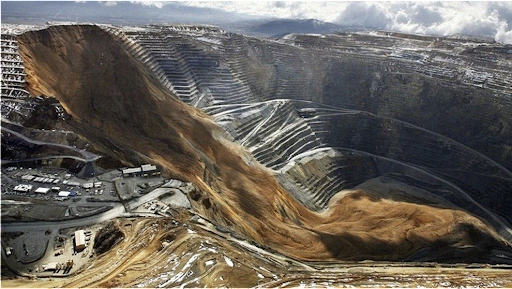This is the third blog in our Examining Climate series, where CCJ staff members and others will be sharing their favorite (or least favorite) climate solution, looking at the benefits and the costs in the hope of sparking an honest conversation about how we address the climate crisis and keep our focus on environmental justice. This blog was written by CCJ Community Advocate Ethan Story.

Natural gas, once presented as an energy source to help the transition from coal, has transformed into a relatively inexpensive and reliable energy source worldwide. However, our reliance on fossil fuels has resulted in irreparable and immense destruction of land and lives. That is why there are many making the argument for a just transition. Part of this transition plan, very simply, is that we reduce our reliance on fossil fuels and slowly start to transition that reliance to renewable energy sources, such as solar and wind power.
This transition is becoming a reality in many parts of the world. In 2008, the University of Pennsylvania became the leading university in the country for buying the most wind-power energy in megawatt-hours. This investment has placed almost half of their power needs into renewable energy. Also in 2008, Rock Port, Missouri, with a population of about 1,300 people, became the first city to be entirely powered by wind. Rock Port installed four 250-foot-tall wind turbines dubbed the Loess Hills wind power facility. The power facility was developed by Wind Capital Group, whose president Tom Carnahan stated just after the city made the official switch to wind power, “By generating enough clean, renewable electricity to meet all of Rock Port’s energy needs while also generating additional revenue for their tax base, the Loess Hills facility is a shining example of the benefits of wind energy development.”
There are many reasons why the demand for renewable energy is becoming more mainstream. The most obvious for wind is that it is more cost-effective than many other power generators. Wind energy is highly competitive now because the power generated from wind, unlike fossil fuel energy, is sold at a fixed price, and the process does not require fuel to operate. Therefore, it removes the price uncertainty associated with fuel costs incurred with traditional energy sources. Additionally, several programs provide tax credits for the development and generation of renewable energy.
Renewable energy creates jobs. Technician jobs in renewable energy are one of the fastest-growing jobs in the United States. In 2012, it was reported that over 119,000 people were working in solar-related jobs and over 75,000 people in the wind energy field. Today, over 374,000 people work in solar-related jobs and over 101,000 in wind energy. In most cases, these jobs originate locally, meaning investment dollars stay in the community, employing those who already live in the area.
Wind energy is also a clean fuel source, as the turbines do not rely on fossil fuels, it is a domestic energy source, and proposed wind projects can be developed on existing farms, ranches, or even existing oil fields, leaving much of the land to be used for several additional beneficial purposes. Wind power is also sustainable; in essence, as long as the wind blows, the wind turbines will convert this energy into electricity. An even more compelling argument is that renewable energy, such as wind-powered electricity, lowers the harmful effects of greenhouse gas (GHG) emissions.
Lastly, state-mandated renewable portfolio standards (RPSs) require utility companies to source a specified percentage of the energy they generate or sell from renewable sources. Each state can differ on its timeline of reaching its targeted goal, and states can vary on the type of renewable energy source used. As of the first half of 2018, 38 states plus the District of Columbia have mandated some combination of renewable energy goals. In brief, many local governments are pushing the hand of power providers by requiring that the energy generated in their area be generated by wind or solar.
What is the Cost?
This demand for renewable energy, better technology, and growing infrastructure creates a need for new supplies of rare earth minerals. One key player in this arena is copper. Copper is the foundation of what makes renewable energy possible. Copper is used in solar panels, wind turbines, electric vehicles, and batteries of energy storage systems: the attributes of copper make it an excellent conductor of electricity. No other known metal can compete with its ability to conduct electricity.
To ensure that renewable energy sources are running correctly, massive amounts of copper are needed. Hybrid vehicles contain almost twice as much copper as traditional fossil-fuel-burning vehicles. Enormous amounts of copper are used in mass transit as well: A single electric subway car or bus contains, on average, over 2,000 pounds of copper.
Wind farms are not immune to this demand for copper either. To construct just one turbine, approximately two tons of copper are needed. Texas is leading the nation in wind power, which is also the state’s fastest-growing profession. In Sweetwater, Texas, a fifty-square-mile wind farm is currently generating 585 megawatts of energy, making it one of the largest wind farms in the country. The size of this wind farm requires electrical conduits made of copper wiring that expands over the entire fifty square miles. The sixty-one wind turbines on this one wind farm necessitate the use of more than 120,000 tons of copper.
This raises the question, is renewable energy truly renewable? The term renewable is a bit misleading as to the physical materials used to develop renewable energy. It sometimes seems that those who champion the idea of renewable energy overlook the subsequent demand for nonrenewable materials. It is a unique predicament for environmentalists: a need for a large-scale transition from gas and coal-based power will consume a massive quantity of non-renewable raw materials.
As the demand for renewable energy increases, the development of both domestic and international rare mineral mines also increases. The result has an adverse effect on surrounding environments. It has been reported that hard-rock mining creates more toxins in the United States than any other industry. Copper mining essentially is the removal of a nonrenewable resource that causes harm to the ecosystem and produces an immense amount of carbon emissions. The technology for mining copper has improved over the years; yet, the process still requires chemicals, fossil fuels, and water to remove a kilogram of metal sheltered in a ton of rock buried hundreds, if not thousands, of feet in the ground. Surface mining, which is the most common method of mining for copper, only has one outcome: the utter destruction of land and water where the operation takes place.
Mines cause chemicals, residues, and high levels of metals to leach into the water during ore extraction. There have been countless examples of this all over the country. One is the Midnite Mine in Washington State, an open-pit uranium mine that operated from 1954 to 1981. The Holden Mine, also located in Washington, was one of the country’s largest copper mines, operating from 1938 until 1957. There is also the Iron Mountain Mine in northern California, a copper mine that closed in 1963. Each one of these mines has since become a Superfund site. Even worse, each one has been documented to have brought devastating harm, leaching toxins into drinking water sources, removing drinking water sources of indigenous communities, and killing hundreds of thousands of fish. This is only a tiny sample of all the mines in the United States, and these mines are located all over the world.
Is there an answer?
With government mandates and public pressure campaigns to push for more wind and solar power, renewable energy is necessary. With that, we must accept that the burden of harm currently exposed to those living in areas of high concentrations of natural gas development will shift to those communities who live on or near rare earth mineral deposits. However, with Just Transition principles in place, this development will be managed differently: It will include those who are impacted in the process and more equitably distribute the benefits and risks.
We need solar and wind power to ensure a transition away from natural gas, which means that rare earth minerals are necessary. We need to be honest with ourselves that we must extract from the earth to develop renewable resources. This means understanding that we will destroy specific areas of the planet to protect others. Though it is not with the intent to simply shift harm to another community; rather, climate change has forced us in this decision. What must change is that a voice must be given to the community members and all stakeholders involved in the extraction process – not only government agencies, politicians, and corporations. This means mandating that the mine operator holds strong ethical standards, uses efficient and effective operations, and that it is regulated appropriately and held accountable for its actions.
Regulations must ensure that mine operators treat not only their employees with a high ethical standard but also the residents in the surrounding area, the families of the workers, and any others who are put at risk due to the mine development. The operator must extract in the most efficient and effective ways possible: Efficient as to maximize ore extraction while minimizing negative environmental and social impacts, effective as to fairly distribute the costs and benefits of extraction to today’s and future stakeholders. Lastly, the operator must be accountable for its actions, admitting to failures as well as stepping up to achievements.
This also means that wind and solar are not the final answer, but another step in the process towards a real just transition. Once developed, those with vested interests in these forms of energy cannot be allowed to prevent advancements toward more sustainable and truly renewable sources of energy. Developing wind and solar is an action that we must take until innovation reveals an energy source where communities worldwide are not exploited or diminished. Until then, we must accept that even with their faults, wind and solar will be a substantial piece of our energy portfolio.


I certainly appreciate Ethan’s take on the issue of danger and harm resulting from even “renewable” energy sources, but he misses one very important thing. We, especially in the US, cannot continue to consume as we do. We, each of us, consumes far more energy than any other nation individually and as a collective. We are wedded to our cars and we continue to produce massive vehicles that only get 16-20mpg and cost $60-80,000. That’s simply absurd. We live in a nation that believes we have the right to walk around in our homes in winter with shorts and t-shirts, so we jack our thermostats up higher than needed when a sweater would solve the problem. The same is true in summer when we insist on cooling our homes to 70F and THEN we put on sweaters while it’s only 80F outside. We use clothes dryers for everything when clothes dry just fine on outside lines or even basement lines. Clearly, individual actions/changes will not bring about what we really need. But we need to be honest with the American public and admit that our lives must not and cannot continue in the present style. (This is not in any way to deny the crimes of the fossil fuel industry, but simply to point out that few writers ever confront the issue of the spoiled US resident.)
Thank you for your comment, Mel! You make some good points, and we wholeheartedly agree.